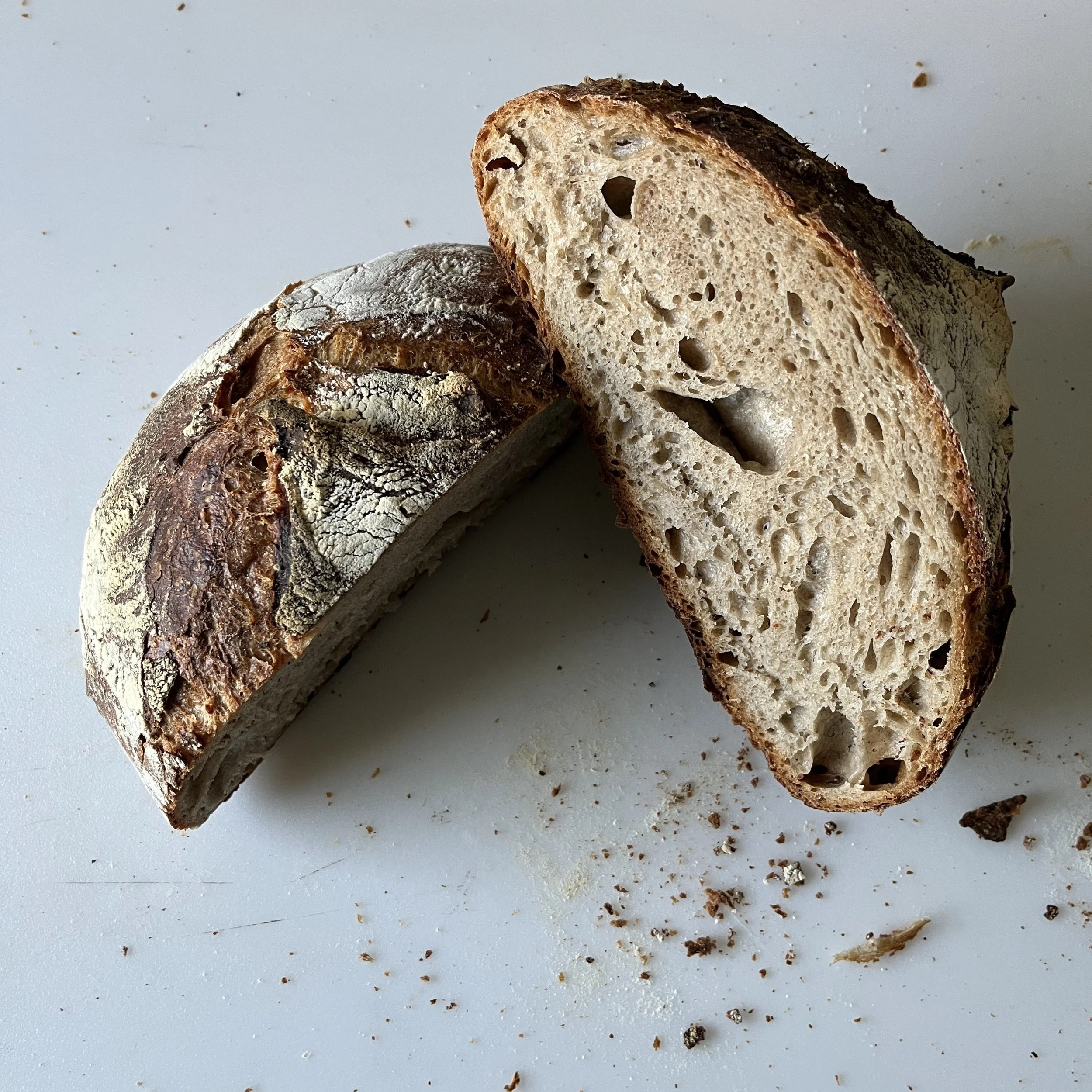You’re gonna need a bigger loaf - Martin Brody
I wanted to see what a rye loaf tasted like, so that is what I decided to bake next. Up until this point I have been using bread flour in the starter but for this dough I switched to all purpose flour. There are lots of resources on what best flour to use for starter and how each affects the end product, for me, cooking bread for myself and the folk, I imagine I’ll get more refined eventually but for now I just choose a flour and go. Why did I choose all purpose flour? Because I have a bag of it that’s not really destined to become anything else. If you want to learn about different starters, read this, it’s a good article, and thorough. Thanks to that article I confirmed that I have been adding my starter at the best stage, when it smells alcoholic.
For Loaf Four, Loaf Five, and this loaf I have made enough dough for two loaves of bread. There is a general philosophy that fermentation is best played as a team sport, that is, while the ratios may hold the same, the more bacteria the more activity. I’m not sure if this has helped me or not, nor do I intend to bake three loaves in order to horse race a double dough against a single any time soon, but if I do in the future I will return here to link it. I’ll simply say that double dough has worked more or less well.
So brass tacks, I used 1000 g flour, 67.5% Bread Flour, 21.9% Rye, 10.6% Whole Wheat, 2.5% salt, and 77.5% Hydration. This will probably be the last time I walk through the method as I imagine you’re bored of reading it and I’m at this point more or less doing all the steps called for, not accounting for individual baker choices / variations.
1. Prepare Levain.
2. Auto-lyse (25 minutes).
3. Mix in levain and salt. This is not something I have discussed but I mix my levain into the dough then salt. Adding salt slows the leavening process so some folk prefer to add salt after the first fold. I have not had an issue doing what I’m doing but I may do it different in the future and find it works better.
4. Fold three or four times in the first hour and a half or two hours at 30 minute intervals.
5. Wait another six and a half or so hours until the bulk proof ends.
6. Turn and shape dough
7. Final proof (overnight in fridge of an hour and a half at room temp)
8. Pre-heat the oven to 500 with dutch oven inside, wait 30 minutes with the dutch oven at 500
9. Score dough
10. Put the dough in the dutch oven, bake for top on, then take the top off and bake some more.
11. Remove dough from the oven and let rest.
12. Eat bread with much butter.
Going forward I will be using a four quart cambro and a piece of masking tape to mark the level of the dough at the beginning of the bulk proof.
Dough
675 g bread flour
219 g rye flour
106 g whole wheat flour
775 g water
25 g salt
Levain
20 g starter
100 g all purpose flour
100 g water
What I did right:
I made two good loaves, with decent crust and open crumb.
What I did wrong:
Getting the dough out of the cambro was annoying and I need a bigger one because getting the dough out is annoying. I didn’t flour the linen towels I proved the loaves in enough and they stuck to the top and I had to peel them off.
What I learned:
Caraway seeds are more essential to rye bread than rye flour.





